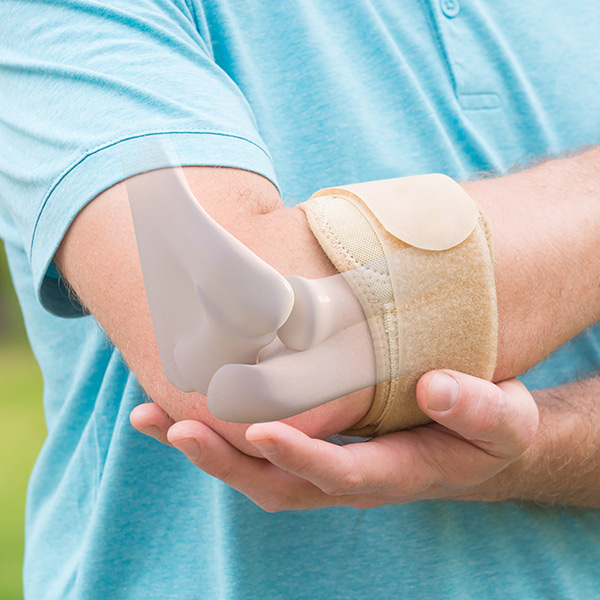




Tennis elbow is a condition characterized by pain in the outer part of the elbow and sometimes extending to the forearm.
The name is also correctly suggestive of the fact that people who play a lot of tennis may very well develop this condition due to the overuse of certain particular muscles.
What exactly happens to the elbow?
The elbow joint is made up of three bones: the humerus is the single upper arm bone, and the radius (laterally) and the ulna (medially) are the paired forearm bones.
The bony bump on the outer side of the elbow where the muscles of the forearm begin is called the lateral epicondyle, and this is the part that is usually affected by tennis elbow. The forearm muscles and the fiber-like tendons that join here often become damaged from overuse.
Causes
While playing sports like tennis and badminton can surely cause the condition, you can still get tennis elbow even if you've never played tennis in your life.
Any repetitive gripping motions can strain your muscles and put too much stress on your tendons, which can eventually cause micro-tears in the tissue.
Certain jobs that make you repeat the same motions again and again, such as typing, plumbing, carpentry and even cooking, can also put you at a higher risk of developing tennis elbow.
Symptoms
Tennis elbow is characterized by pain and tenderness in the outer part of the elbow or the outside of the upper forearm. The pain is usually felt most while gripping, lifting, handshakes or performing any hand movements that involve the elbow or wrist.
How to determine whether you have tennis elbow?
If you feel the specific kind of pain I've described above, you might want to get some tests done.
— MRI tests will help determine the presence and extent of the damage.
— EMGs can help verify if the pain is purely muscle- or tendon-related, or if any nerves have been impacted as well.
— X-rays may also be suggested to rule out arthritis.
It is always recommended to seek medical advice early if you experience any kind of pain that lasts more than a few days.
Treatment
Like with most muscle or tissue-related problems, tennis elbow may also lead to inflammation along with pain.
— Cold compresses can help ease and soothe the swelling.
— Some degree of immobilizing can be needed depending on the degree of damage. In such a case, a brace or a strap will usually help.
— Physical therapy can be slowly introduced to gently exercise your elbow and arm muscles, thus strengthening them.
— Pain relievers are often prescribed to help with discomfort.
— There are also some surgical procedures that can help remove the damaged tissue.
If diagnosed, an important rule is to allow your arm to rest and fully recover instead of aggravating the injured area. With proper care, this condition can be overcome in most cases.